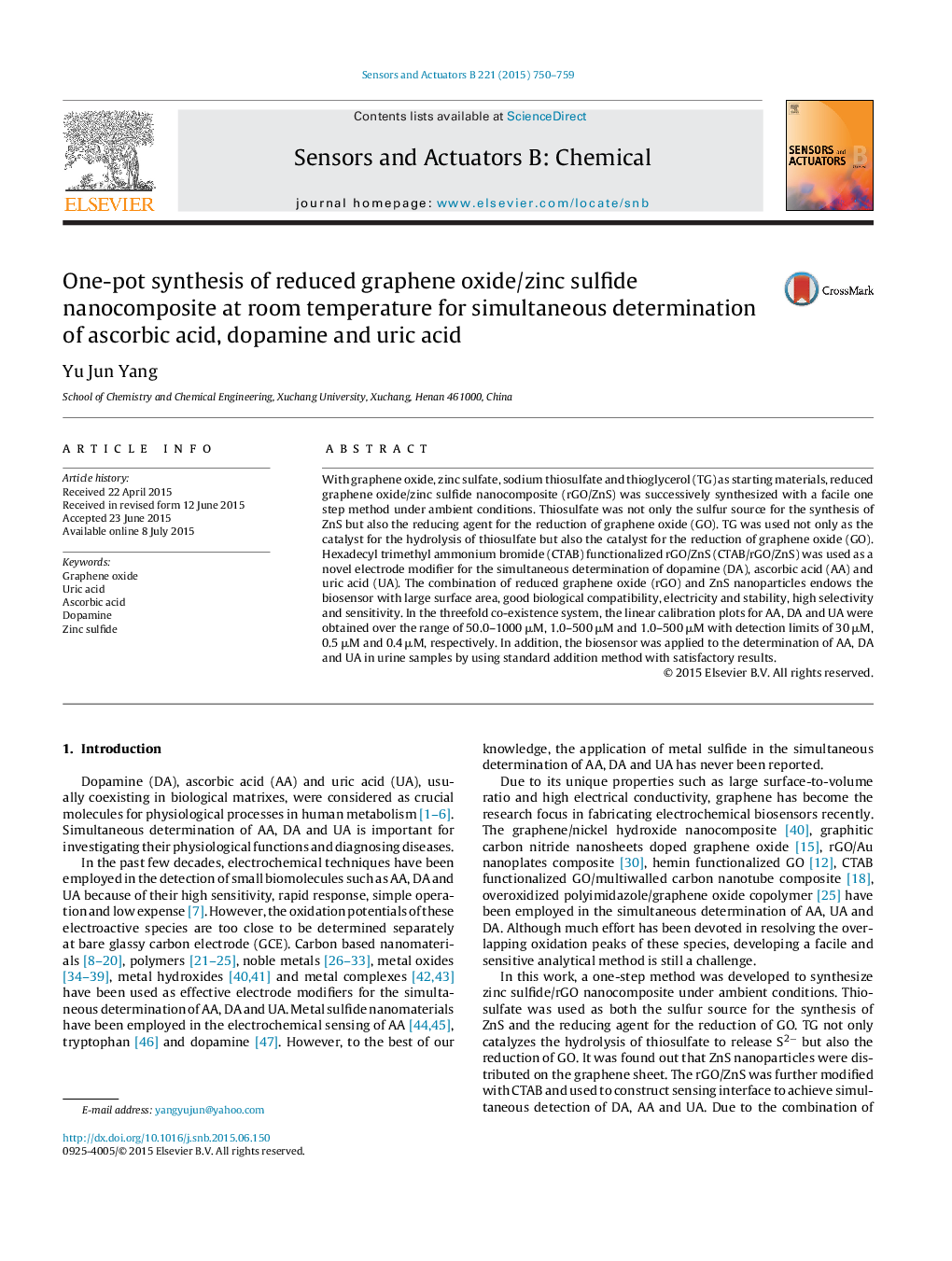| Article ID | Journal | Published Year | Pages | File Type |
|---|---|---|---|---|
| 7145654 | Sensors and Actuators B: Chemical | 2015 | 10 Pages |
Abstract
With graphene oxide, zinc sulfate, sodium thiosulfate and thioglycerol (TG) as starting materials, reduced graphene oxide/zinc sulfide nanocomposite (rGO/ZnS) was successively synthesized with a facile one step method under ambient conditions. Thiosulfate was not only the sulfur source for the synthesis of ZnS but also the reducing agent for the reduction of graphene oxide (GO). TG was used not only as the catalyst for the hydrolysis of thiosulfate but also the catalyst for the reduction of graphene oxide (GO). Hexadecyl trimethyl ammonium bromide (CTAB) functionalized rGO/ZnS (CTAB/rGO/ZnS) was used as a novel electrode modifier for the simultaneous determination of dopamine (DA), ascorbic acid (AA) and uric acid (UA). The combination of reduced graphene oxide (rGO) and ZnS nanoparticles endows the biosensor with large surface area, good biological compatibility, electricity and stability, high selectivity and sensitivity. In the threefold co-existence system, the linear calibration plots for AA, DA and UA were obtained over the range of 50.0-1000 μM, 1.0-500 μM and 1.0-500 μM with detection limits of 30 μM, 0.5 μM and 0.4 μM, respectively. In addition, the biosensor was applied to the determination of AA, DA and UA in urine samples by using standard addition method with satisfactory results.
Related Topics
Physical Sciences and Engineering
Chemistry
Analytical Chemistry
Authors
Yu Jun Yang,
